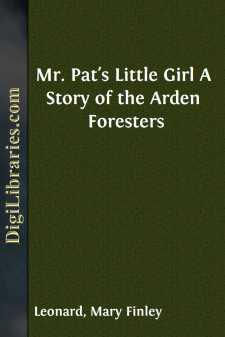Categories
- Antiques & Collectibles 13
- Architecture 36
- Art 48
- Bibles 22
- Biography & Autobiography 813
- Body, Mind & Spirit 142
- Business & Economics 28
- Children's Books 17
- Children's Fiction 14
- Computers 4
- Cooking 94
- Crafts & Hobbies 4
- Drama 346
- Education 46
- Family & Relationships 57
- Fiction 11829
- Games 19
- Gardening 17
- Health & Fitness 34
- History 1377
- House & Home 1
- Humor 147
- Juvenile Fiction 1873
- Juvenile Nonfiction 202
- Language Arts & Disciplines 88
- Law 16
- Literary Collections 686
- Literary Criticism 179
- Mathematics 13
- Medical 41
- Music 40
- Nature 179
- Non-Classifiable 1768
- Performing Arts 7
- Periodicals 1453
- Philosophy 64
- Photography 2
- Poetry 896
- Political Science 203
- Psychology 42
- Reference 154
- Religion 513
- Science 126
- Self-Help 84
- Social Science 81
- Sports & Recreation 34
- Study Aids 3
- Technology & Engineering 59
- Transportation 23
- Travel 463
- True Crime 29
The Pleasant Street Partnership A Neighborhood Story
Description:
Excerpt
CHAPTER FIRST
A WAVE OF IMPROVEMENT
Pleasant Street was regarded by the Terrace as merely an avenue of approach to its own exclusive precincts. That Pleasant Street came to an end at the Terrace seemed to imply that nothing was to be gained by going farther; and if you desired a quiet, substantial neighborhood,—none of your showy modern houses on meagre lots, but spacious dwellings, standing well apart from each other on high ground,—you found it here.
It could not be denied that the Terrace was rather far down town. Around it the busy city was closing in, with its blocks of commonplace houses, its schools and sanitariums, its noisy car lines, until it seemed but a question of a few years when it would be engulfed in a wave of mediocrity. Fashion had long ago turned her face in another direction, and yet in a way the Terrace held its own. It could boast of some wealth, and more distinguished grandfathers were to be heard of within its small area than in the length and breadth of Dean Avenue.
Its residents felt for each other that friendliness born of long association. Some of the best people of the town had built their homes here between thirty and forty years ago, and a comparison of directories would have shown a surprising proportion of the old names still represented.
Perhaps no one thing contributes more to a sense of dignity than long residence in one house, and it was natural enough that the Terrace should shrug its shoulders at the row of toy dwellings that sprang up almost magically on Pleasant Street. That this thoroughfare, so long given over to side yards and vacant lots, was showing a disposition to improve, was a matter of no concern to the Terrace until unexpectedly its own territory was invaded.
On the northeast corner of the Terrace and Pleasant Street there had long stood a cottage. In the midst of a large lot, with fine shade-trees around it and a beautifully kept lawn, it had never seemed out of place among its more pretentious neighbors; but now upon the death of its owner the property was divided into three lots and offered for sale. What this might mean was at first hardly realized, until one day men were discovered to be at work on the corner, digging a foundation.
Upon inquiry it developed that a drug store was to be built. The neighborhood did not like this, but felt on the whole it might have been worse,—this conclusion, as Wayland Leigh pointed out later on, being founded on the mistaken hypothesis that all drug stores are pretty much alike.
It happened that the druggist had for a brother a young and aspiring architect, who conceived the idea of putting up a building in keeping with a residence district. The result was a sloping-roofed structure whose shingled second story projected over the first, which was of concrete. It might have been a rural station, or post-office, or a seaside cottage, but a drug store it did not remotely suggest.
The store opened on Pleasant Street; to reach the private entrance you must go in from the Terrace, where there was a square of lawn and a maple tree, relic of better days....






